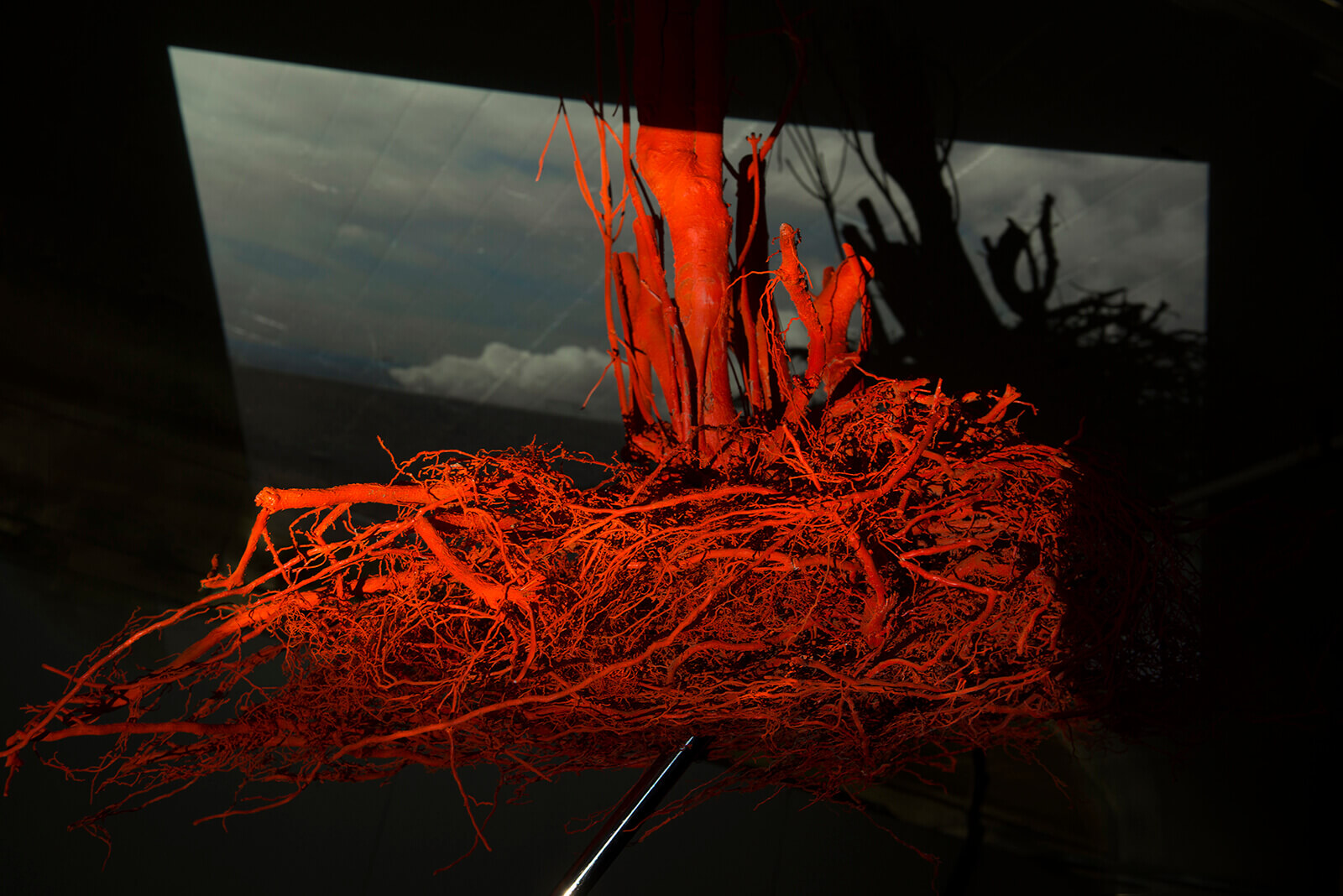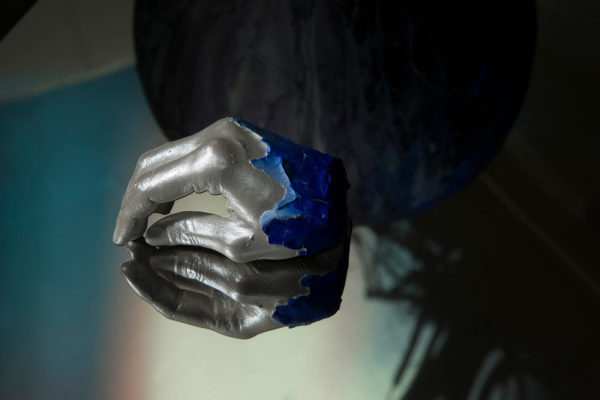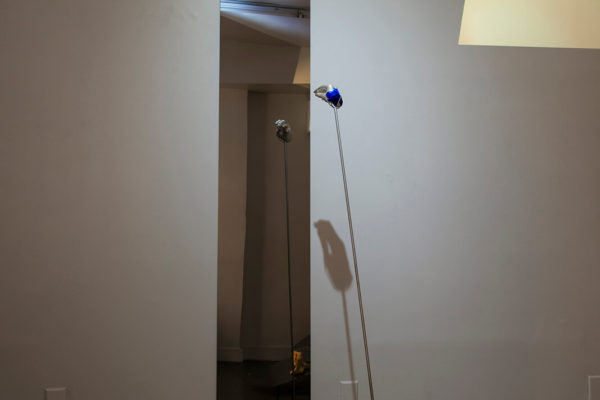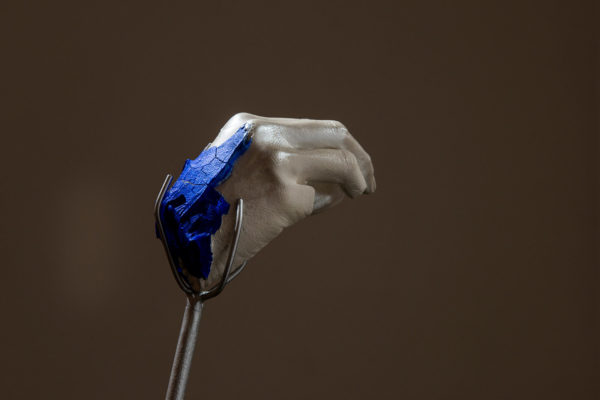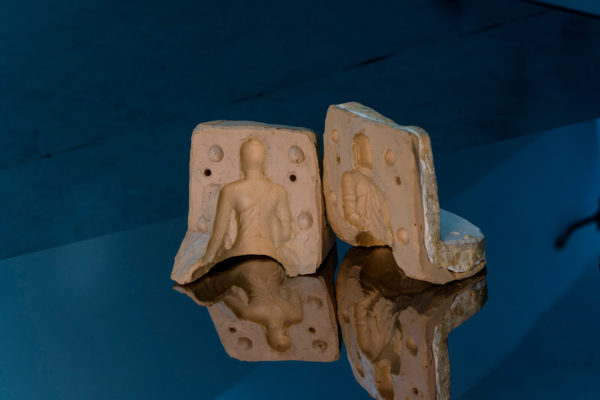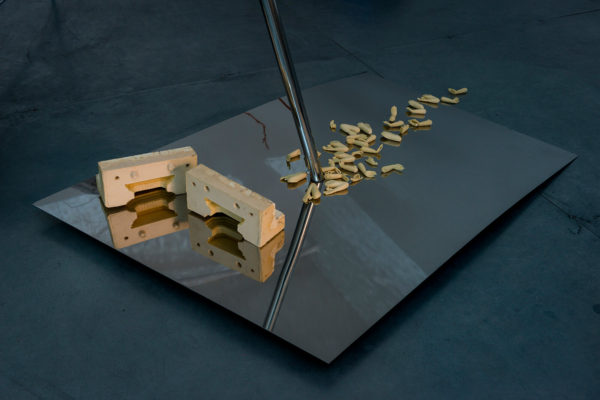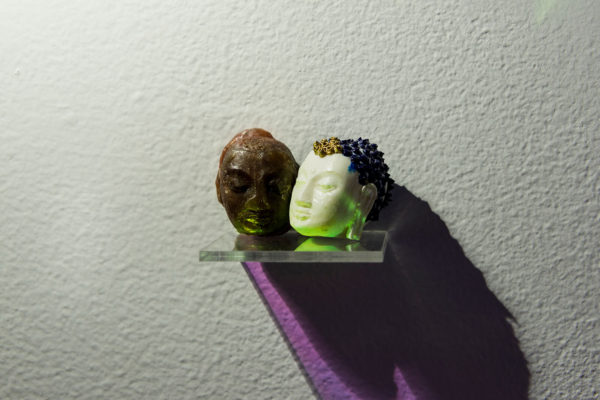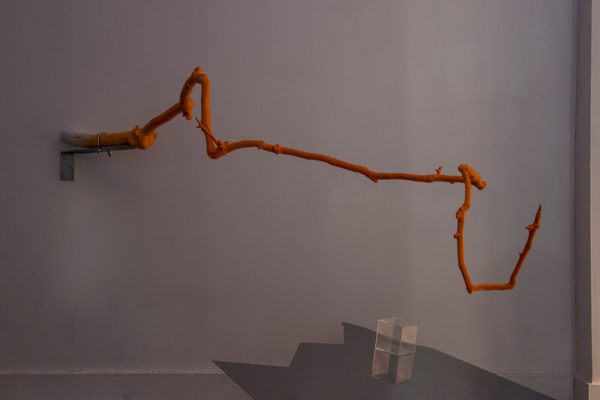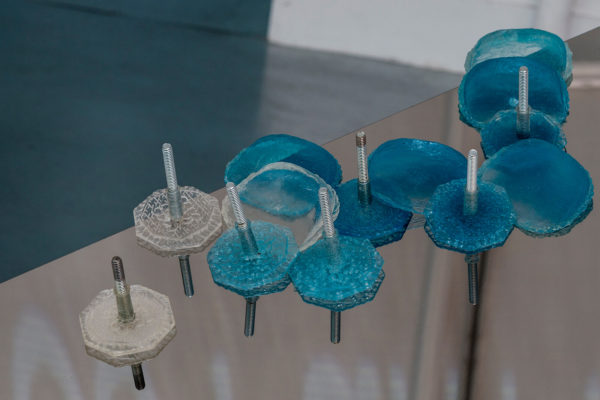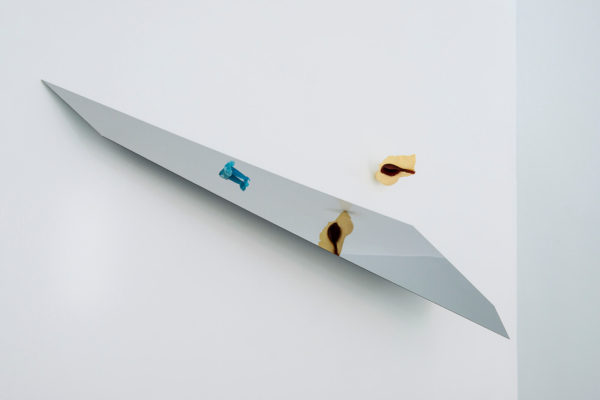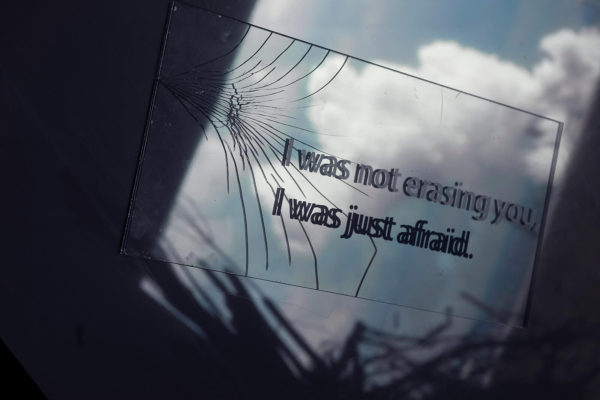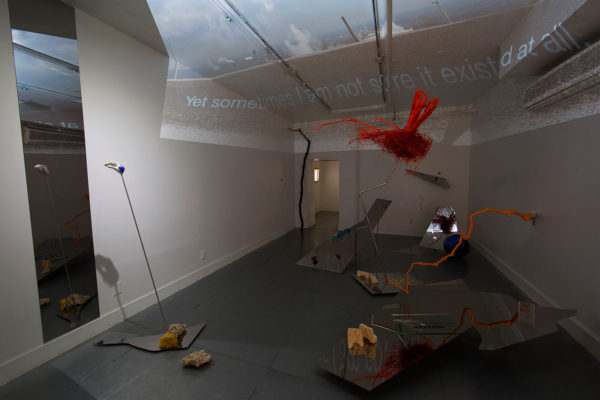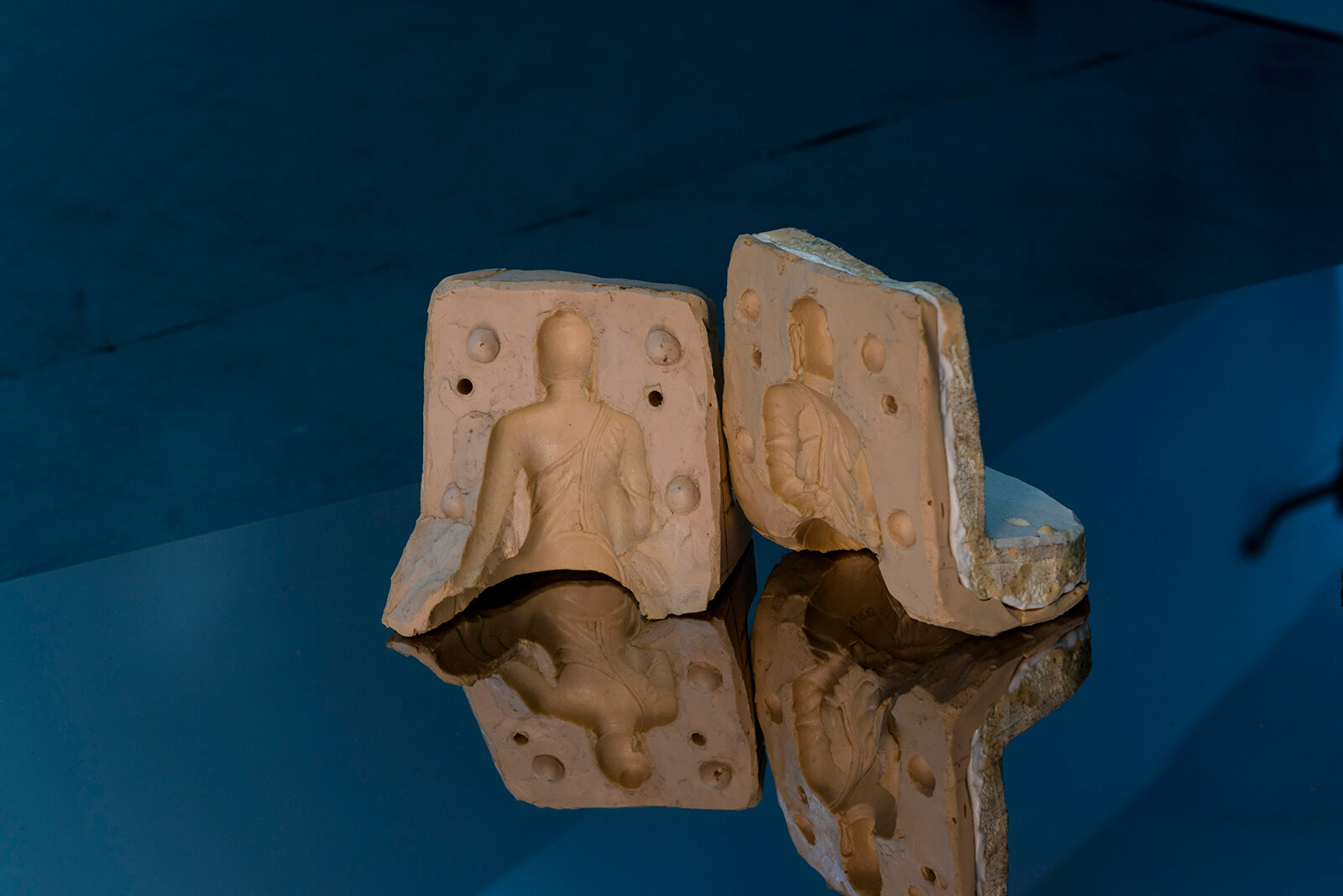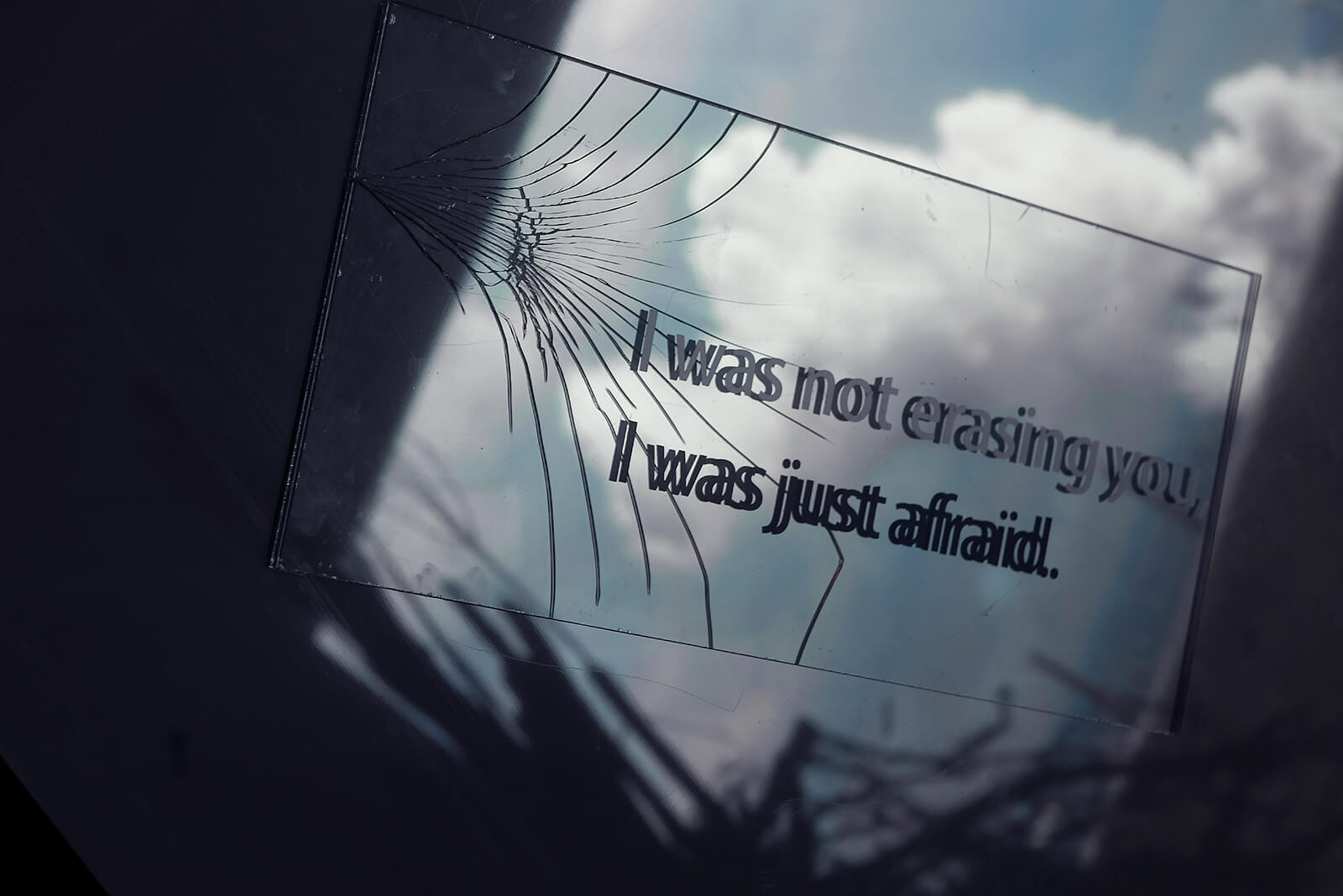Series: Funes’ Broken Mirror
Exhibition: Funes’ Broken Mirror
Date: April 21 to May 23, 2018
Medium: installation | tree stumps, paint, mirrored finished stainless steel sheets, steel, resin, rubber mold, resin casts, glass, vinyl text, plaster, neodymium magnets, wood, screws, nuts, video, sound, live performance
Dimension: variable
Location: Rubber Factory, New York
Read the full description in Press Release
Funes’ Broken Mirror is a project that explores certain human experiences shared among many of us, such as loss, alienation, separation, trauma, adaption, and change. In this debut at the Rubber Factory, I presented an installation consisting of sculpture, video, found objects, and text. I looked into the subjects and their visual representations, such as memories, relationships, modifications of objects and images, and our consciousness within this prevailing era of technology, using specific personal experiences as a point of departure. By employing my body and mind as a platform to process information, like a doctor with a “medical gaze” on the human body, I held up a mirror to examine psychological experience and transcribe the abstract processes into a three-dimensional visual presentation.
Inspired by the character Ireneo Funes in Jorge Luis Borges’ novella Funes the Memorious, a man whose memories are forever imprinted in his mind as a vast mirror of the world, I envisioned myself in his mind, reimagining how those glimpses of moments would look and feel during one of Funes’ sleepless nights. While digging through those lucid, instantaneous, and indistinct moments of her own life, I reconnected certain fragments of objects and memories that converge upon one space, despite the differences in location and time.
This exhibition was a result from my residency at the International Studio & Curatorial Program (ISCP), New York, and was supported by the Ministry of Culture, Taiwan.

